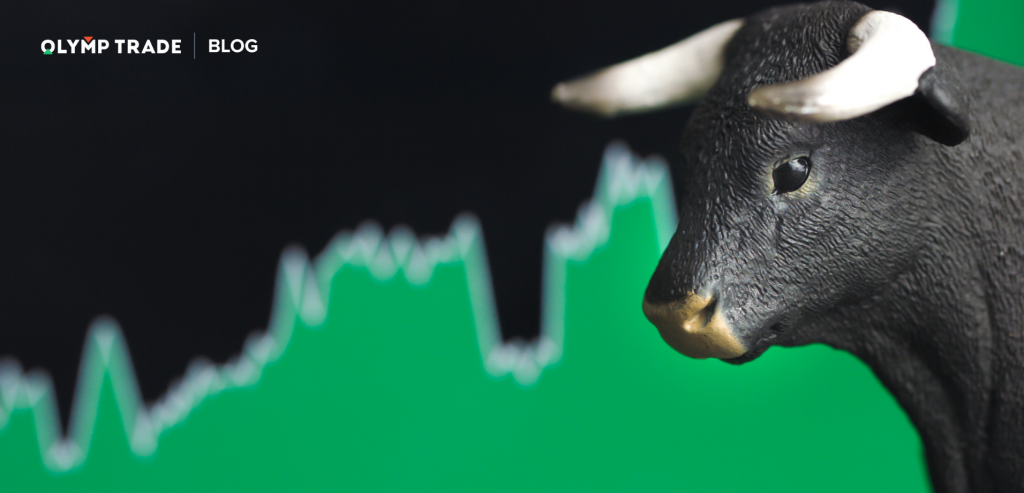With the disruption of global supply chains and the increase in commodity prices, the global economy is experiencing inflationary pressures. Let’s examine the likely outlook and relation of these factors.
What’s Happening in the Commodities Market?
After a period of relatively consistent growth, the commodities market is now experiencing fluctuation.
- Gold rose from $1,800 per Troy ounce in February to more than $2,000 in March. That was more than an 11% increase. Later, it traded around $1,950 in April. By May, it went back down to the zone of $1,800, erasing most gains.
- Silver increased around 20% in the February-March uptrend from $22.5 to almost $27.5 per ounce at the peak. After that, it lost steam and traded at $25 most of April. At the end of the month, it started a downtrend which continued into May and dragged it down to the two-year support zone of $20.
- Brent increased more than 50% and is now trading above $100 per barrel. Additionally, futures on natural gas rose by 32.5%.
The gold/silver ratio is now maintained at about 70:1. As it fluctuates, you may use it for multiple trading opportunities. For example, if gold increases, the ratio will also increase. In this case, you can open Down trades on gold and Up trades on silver in the Forex trading mode of the FiduCenter platform.
The Bloomberg Commodity Index added nearly 30% since the beginning of the year although the growth dynamic was uneven across months. After starting an uptrend in January and accelerating it in February, the index has been fluctuating around the level of 130 since March. Some economists commented that 20 out of the 23 index components were in backwardation.
Therefore, there was a surge in commodity prices which in many sectors later on transformed into increased volatility around certain levels.
Why are Commodity Prices Rising?
Increasing geopolitical tension sparked by the Russia-Ukraine conflict are a major contributing factor to the rise of commodity prices. This situation adds pressure on an already strained global logistics problem and rampant inflation caused by direct cash payments to citizens by many countries in response to Covid lockdowns.
After the US, Russia is the second-largest oil producer, with a daily oil output of 10.5mln barrels. Its daily production of gas is 693bln cubic meters (bcm), which is also the second-biggest in the world. Therefore, Russia is a major energy producer. At the same time, it is sanctioned. Naturally, global investors are questioning the stability of the commodity market under these conditions, and their worries fuel prices.
Here is the source of the complexity. At the moment, European countries consume fairly large quantities of Russian gas. For example, 49% of Germany’s and 24% of France’s gas consumption comes from Russia. Therefore, if it is in the interest of the European countries, changing to alternative gas providers is not easy for them and will take time. In the meantime, trying to protect its own interest, Russia requested to have all the payments for the energy supplies to be done in Russian national currency, while it has always been done in USD before. Clearly, that’s a step towards escalation of the geopolitical tension, and another booster for the rise of commodity prices.
Who Benefits from Increasing Commodity Prices?
Resource economies can benefit from rising energy prices as they earn larger profits. OPEC members are among such countries.
On the other hand, China, India, and other net importing countries refused to join the sanctions against Russia. As a result, they can now buy Russian oil at significant discounts. Observers report that In March, India bought about half of its last year’s imports from Russia, and that total oil exports from Russia to India have multiplied four times. With that, India plans to increase imports of Russian coal as well.
Finally, the energy price growth can also benefit the oil producers in the EU and the U.S. For example, Chevron and Exxon Mobil’s stock prices have lately shown strong upward trends.
Energy Price Growth is Causing Inflation
As oil and natural gas are basic elements used in every economy in many fields, their increasing prices led to an array of consequences. Among the most immediate effects, supply chains have become more expensive. In turn, that drove up consumer prices and made ground and air transportation more expensive too. This is only one end of the inflationary process.
At the other one, there is disruption of supply chains due to the imposed sanctions on Russia, and the conflict in Ukraine. Together, these countries account for about 25% of global grain trade. As the supplies of both are now threatened, it may result in higher food prices. Therefore, this is contributing to commodities market inflation.
According to the latest data, the year-on-year inflation rate is 7.9% in the US and 5.9% in the EU.
The Problem of Interest Rates to Fight Inflation
The US Fed raised the key interest rate to stabilize liquidity and fight inflation. Such a step also often increases the size of payments on the government bonds while the bond yields are rising. In turn, that requires more money to service these payments. One of the easiest ways to get this money is to simply increase its supply by printing it. However, that boosts inflation, effectively nullifying the raising of the interest rates as an anti-inflationary measure.
Will the Price of Oil Decrease and When?
The future of energy prices and other commodities heavily depends on how the conflict around Ukraine evolves, anti-Russia sanctions, and how long it all lasts. When that happens, that will mean the start of reduction of geopolitical risks and lower commodity prices. In the nearest future, that may be rather unlikely. Therefore, we believe any drawdowns in the oil and gas market should be traded to the upside.

